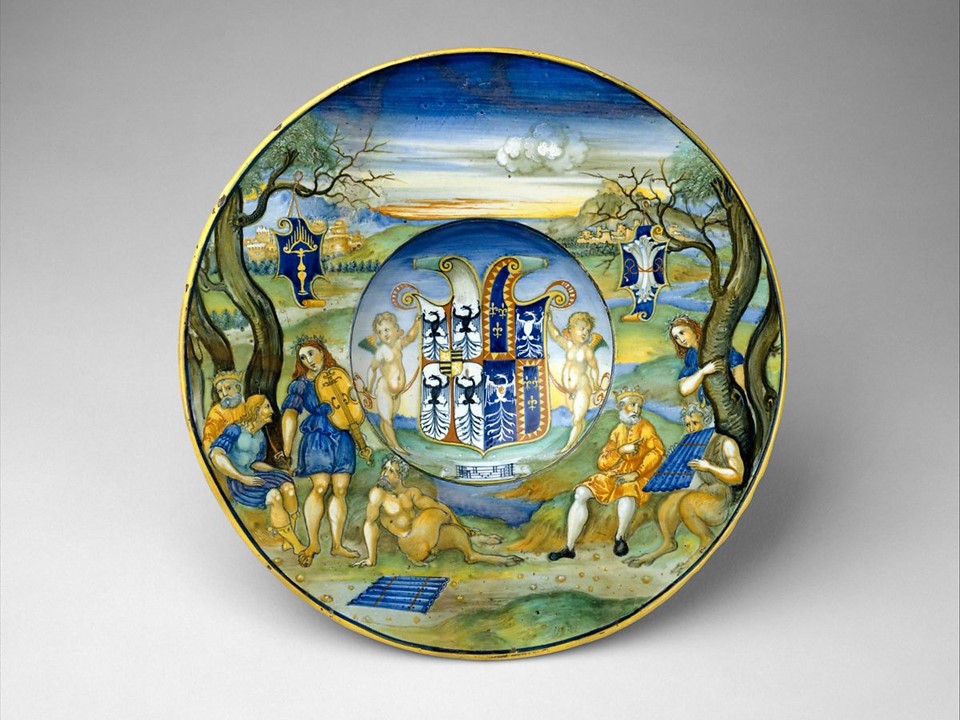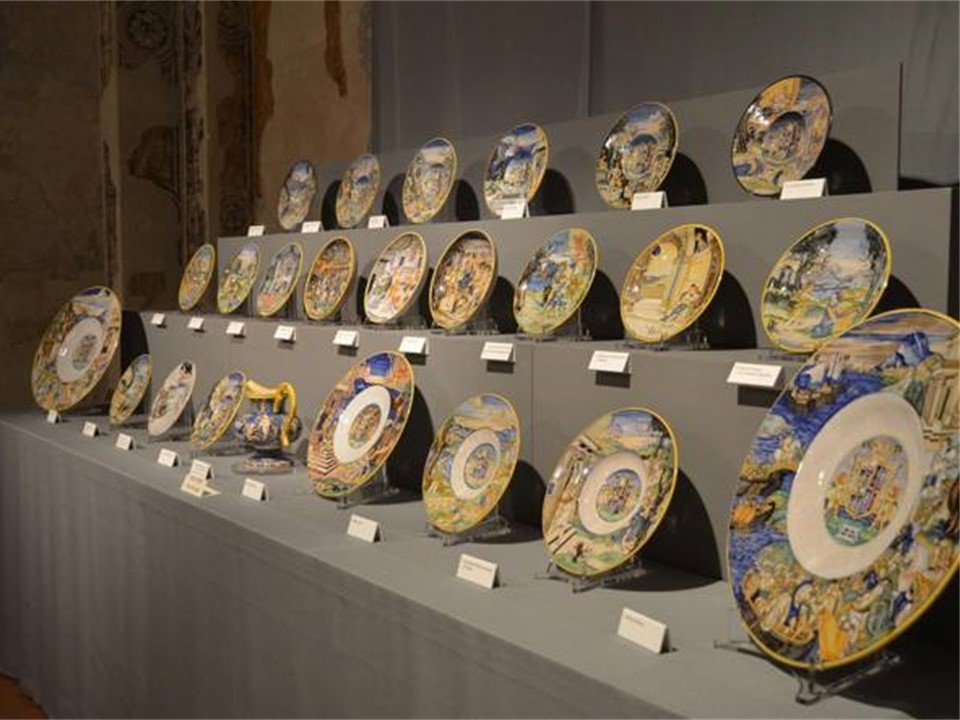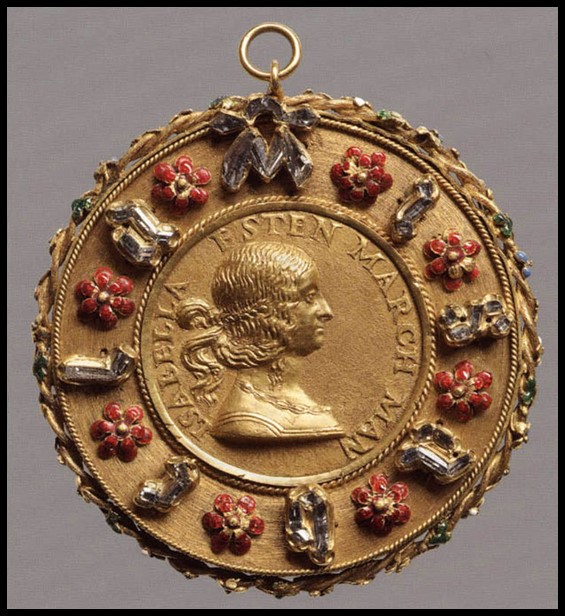
Armorial Plate (tondino): The story of King Midas (This plate is part of the Isabella D’Este Credenza), ca. 1520–25, Maiolica (tin-glazed earthenware), Diam. 27.5 cm, the MET, NY, USA
https://www.metmuseum.org/art/collection/search/459198?searchField=All&sortBy=Relevance&ft=Nicola+da+Urbino&offset=0&rpp=20&pos=1
Maiolica, the refined, white-glazed pottery of the Italian Renaissance, we are informed by the Metropolitan Museum of Art experts, was adapted to all objects that were traditionally ceramic, such as dishes, bowls, serving vessels, and jugs of all shapes and sizes. It was also used as a medium for sculpture and sculptural reliefs, as well as floor and ceiling tiles. The latter were rectangular, laid side by side across specially adapted joists. Maiolica Credenza is a new BLOG POST about a very special set of plates that connects important people of the Renaissance… Isabella d’Este, Marchioness of Mantua, Eleonora Gonzaga, Isabella’s daughter and Duchess of Urbino, and the artist Nicola da Urbino, a great innovator of the humble art of pottery-making. https://www.metmuseum.org/toah/hd/maio/hd_maio.htm

https://milano.corriere.it/notizie/cronaca/15_novembre_01/i-piatti-raccontano-rinascimento-mostra-gioielli-isabella-d-este-71ab65c2-80b2-11e5-aac9-59b4cd97071f.shtml
I have had made a credenza (service, of a kind that could be displayed on a buffet) of earthenware vessels and I am sending it… since the maestri of this country of ours (the Duchy of Urbino) have some reputation for good work. And if it pleases Your Excellency I shall be happy and you might make use of it at Porto (Porto Mantovano, Isabella’s country villa) since it is a villa thing (Cosa da Ville)… elegantly wrote Eleonora Gonzaga, Duchess of Urbino to her mother Isabella d’Este, Marchioness of Mantua describing a magnificent gift of maiolica plates by Nicola da Urbino, the Raphael of Maiolica, the most important creator of the maiolica narrative (istoriato) painting. https://books.google.gr/books?id=2i_ADAAAQBAJ&pg=PA172&lpg=PA172&dq=Letter+of+Eleonora+Gonzaga+e+Isabella+d%27Este+on+a+credenza&source=bl&ots=hRCkXjAsnh&sig=ACfU3U08yg2DA0SUvn2Nvmyd4awltOnmMg&hl=el&sa=X&ved=2ahUKEwiR48z7xM3xAhU3gf0HHWvcBU8Q6AEwEnoECBYQAw#v=onepage&q=Letter%20of%20Eleonora%20Gonzaga%20e%20Isabella%20d’Este%20on%20a%20credenza&f=false

Portrait Medal of Isabella d’Este, 1495-98, Gold with diamonds and enamel, D. 7 cm,
Kunsthistorisches Museum, Vienna, Austria
Today I would like to act more like a Curator rather than a Teacher and present you with a site I am fascinated about. It is titled… IDEA Isabella D’Este Archive and I like the way it was founded, how it operates, and the wealth of information on the current topic. I wish I was in Mantua this summer and over gelato, listen to the stories the scholars of IDEA tell… how maiolica… was a popular type of earthenware in sixteenth-century Europe. How… this type of ceramic was fired at a low temperature and covered in a thin glaze that created a white ground for colorful narratives and personal emblems…How the IDEA scholars reunite in their site the surviving twenty-three individual maiolica dishes from Isabella’s credenza for study. Isabella d’Este’s maiolica dishes can no longer be viewed as a single service, and are now divided among museums and private collectors across three continents. By viewing all twenty-three dishes together, researchers have a better sense of service as a whole, in which the individual dishes, painted narratives of Ovid and Virgil, read like pages in a book. https://ideaart.web.unc.edu/idea-ceramics/
For the time being, I put together a PowerPoint of all surviving maiolica plates of the famous Isabella D’Este Credenza… HERE!
Two interesting IDEA Videos on the Isabella D’Este Maiolica Credenza by Nicola da Urbino can be seen… https://ideaart.web.unc.edu/the-illustrated-credenza/
I somehow feel this is the beginning of a fascinating journey…